Settlement and Bearing Capacity of Rectangular Footing in Reliance on the Pre-Overburden Pressure of Soil Foundation
Abstract
:1. Introduction
2. Methods and Analysis
2.1. Theoretical Basics for Predicting the Settlement of a Rectangular Foundation in a Linear Formulation
2.2. Hencky’s System of Physical Equations
3. Results and Discussion
3.1. Calculation of Total Strain in Soil Layers Taking into Account the Non-Linear Deformability and Their Various Mechanical Parameters
3.2. Calculation of Total Settlement of Soil Layers Taking into Account the Non-Linear Deformability and Their Various Mechanical Parameters
4. Conclusions
- The settlement and bearing capacity of rectangular footings are regarded as the main calculation parameters when designing foundations used in construction.
- These calculations show that geo-mechanical models for foundation, including geometric parameters of the footing (length, width, depth, initial and boundary conditions) and computational soil models, such as linear and non-linear models with different systems of physical equations (Hooke and Hencky), have a significant influence on the evaluation of settlement and bearing capacity.
- The computational soil model used in this article, with the possibility of lateral expansion (, and ), along with the elastic–plastic model for shear strain–stress dependency and the non-linear model for volumetric strain–stress dependency as parts of Hencky’s system of physical equations, allows us to present the total deformation as the sum of the volumetric and shear components (). Only in this case do the strain–stress curve and the settlement–load curve both have decaying and persistent (double curvature) characteristics.
- The computational soil model proposed here indicates that, thanks to the choice of different combinations of stiffness (Ge, , , ) and strength parameters ( and c), the curve of dependency between settlement and load can be observed as decaying or persistent with various bending degrees of the curvature.
- This article presents a substantial dependency of total deformation on stress as well as total settlement on load, depending on the various values of pre-overburden pressure . The growth of pre-overburden pressure leads to an increase in the bearing capacity of the foundation soil, and a decrease of total settlement compared to the case with lower values of .
Author Contributions
Funding
Institutional Review Board Statement
Informed Consent Statement
Data Availability Statement
Conflicts of Interest
References
- Dempsey, J.P.; Li, H. A rigid rectangular footing on an elastic layer. Geotechnique 1989, 39, 147–152. [Google Scholar] [CrossRef]
- Butterfield, R.; Banerjee, P.K. A rigid disc embedded in an elastic half space. Geotech 1971, 2, 35–52. [Google Scholar]
- Mullan, S.J.; Sinclair, G.B.; Brothers, P. Stresses for an elastic half-space uniformly indented by a rigid rectangular footing. Int. J. Numer. Anal. Methods Geomech. 1980, 4, 277–284. [Google Scholar] [CrossRef]
- Nwoji, C.; Onah, H.N.; Mama, B.; Ike, C.C. Solution of Elastic Half Space Problem using Boussinesq Displacement Potential Functions. Asian J. Appl. Sci. 2017, 5. [Google Scholar]
- Pantelidis, L. Elastic Settlement Analysis for Various Footing Cases Based on Strain Influence Areas. Geotech. Geol. Eng. 2020, 38, 4201–4225. [Google Scholar]
- Pantelidis, L.; Gravanis, E. Elastic Settlement Analysis of Rigid Rectangular Footings on Sands and Clays. Geosciences 2020, 13, 491. [Google Scholar] [CrossRef]
- Timoshenko, S.P. Theory of Elasticity (Teoriya Elastichnosti); Nauka: Moscow, Russia, 1975. [Google Scholar]
- Whitlow, R. Basic Soil Mechanics; Pearson Prentice Hall: New York, NY, USA, 2001. [Google Scholar]
- Boussinesq, J. Application des Potentiels à L’étude de L’équilibre et du Mouvement des Solides Élastiques: Principalement au Calcul des Déformations et des Pressions que Produisent, dans ces Solides, des Efforts Quelconques Exercés sur une Petite Partie de Leur Interieur; Gauthier-Villars: Paris, France, 1885. [Google Scholar]
- Hencky, H. Zur Theorie plastischer Deformationen und der hierdurch im Material hervorgerufenen Nachspannungen. Zammzeitschrift Fur Angew. Math. Und Mech. 1924, 4, 323–334. [Google Scholar] [CrossRef]
- Ter-Martirosyan, Z.G. Predicting the settlement of foundation based taking into account induced anisotropy. IOP Conf. Ser. Mater. Sci. Eng. 2021, 1015, 012048. [Google Scholar] [CrossRef]
- Florin, V.A. Fundamentals of Soil Mechanics, Volume I; Gosstroyizdat: Moscow, Russia, 1959. (In Russian) [Google Scholar]
- Vyalov, S.S. Rheological Basis of Soil Mechanics (Reologicheskie Osnovy Mekhaniki Gruntov); Vyshaya shkola: Moscow, Russia, 1978. [Google Scholar]
- Trofimov, V.T. Soil Science (Gruntovedenie), 6th ed.; Nauka: Moscow, Russia, 2005. [Google Scholar]
- Casagrande, A. The determination of pre-consolidation load and itʼs practical significance. In Proceeding of the 1st International Conference on Soil Mechanics, Cambridge, MA, USA, 22–26 June 1936. [Google Scholar]
- Labuz, J.F.; Zang, A. Mohr–Coulomb Failure Criterion. Rock Mech. Rock Eng. 2012, 45, 975–979. [Google Scholar] [CrossRef] [Green Version]
- Ter-Martirosyan, Z.G. Soil Mechanics (Mekhanika Gruntov); ASV Publisher: Moscow, Russia, 2009. [Google Scholar]
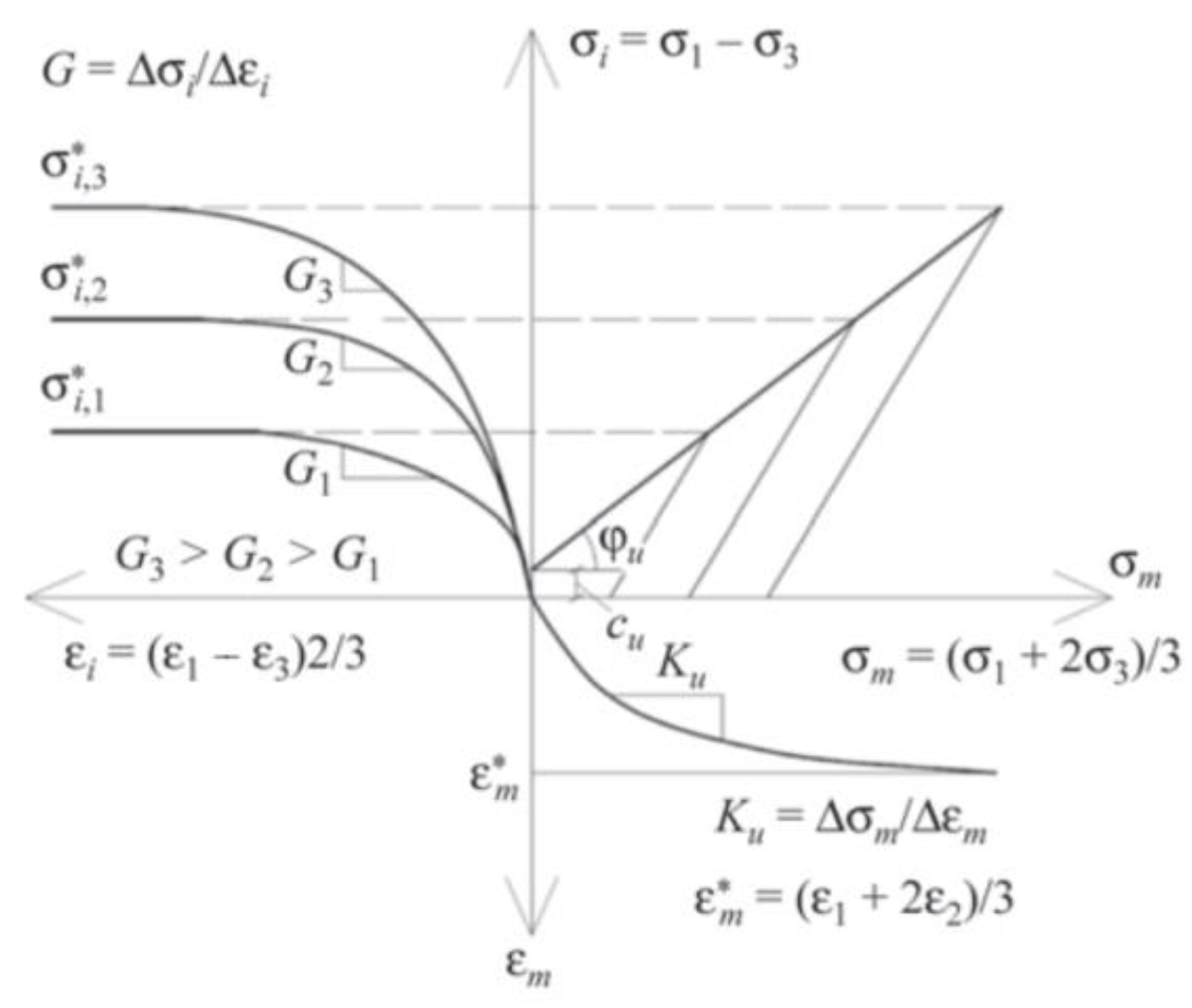
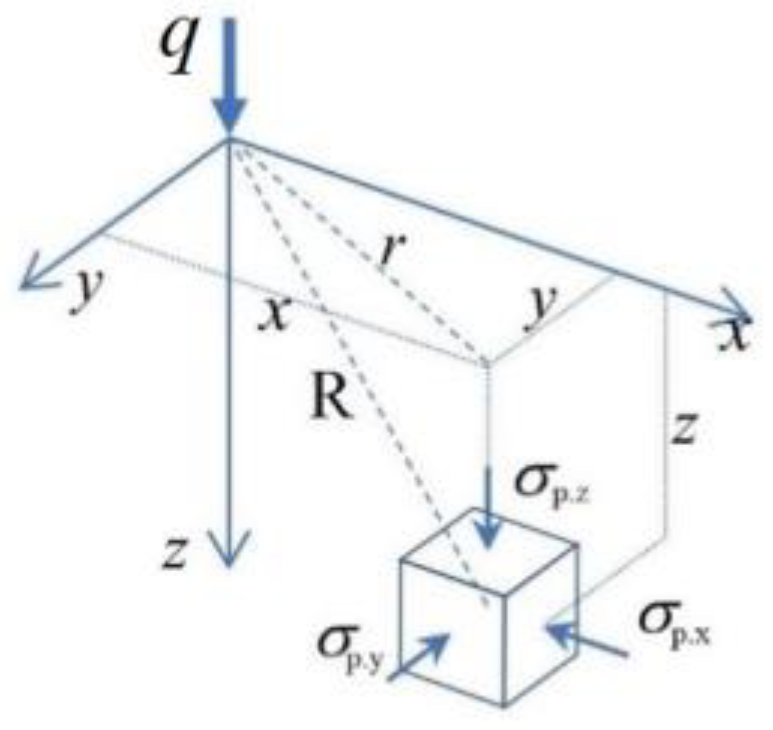
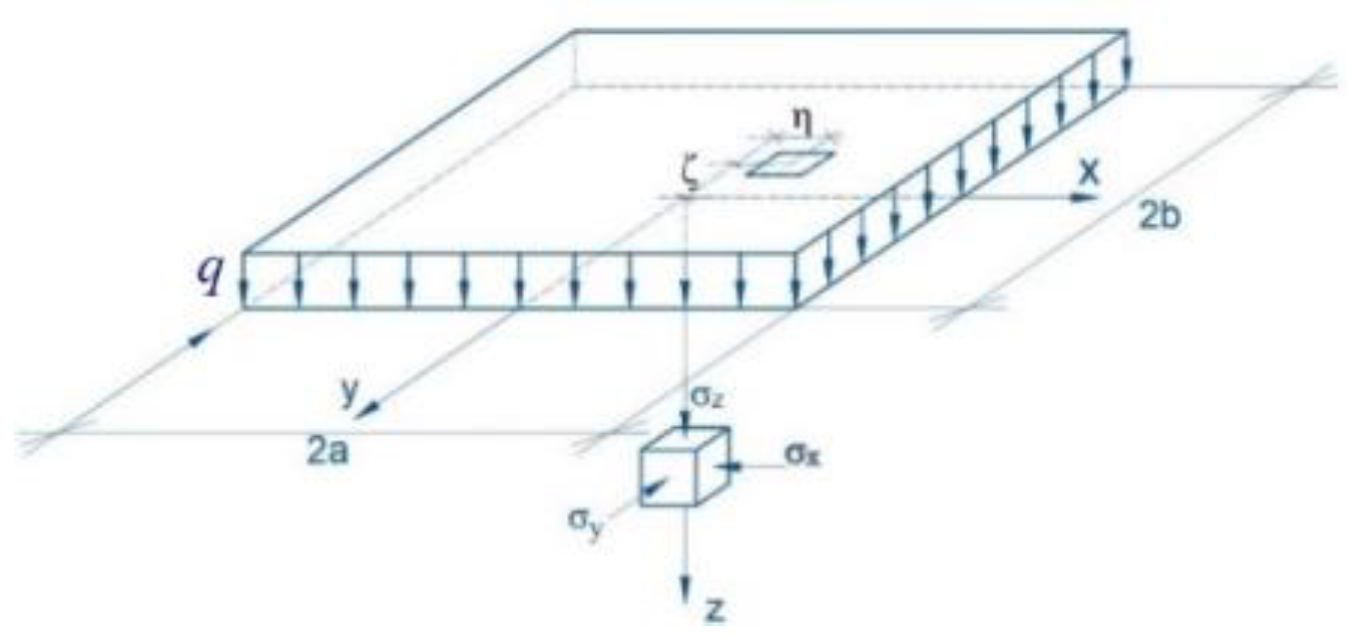
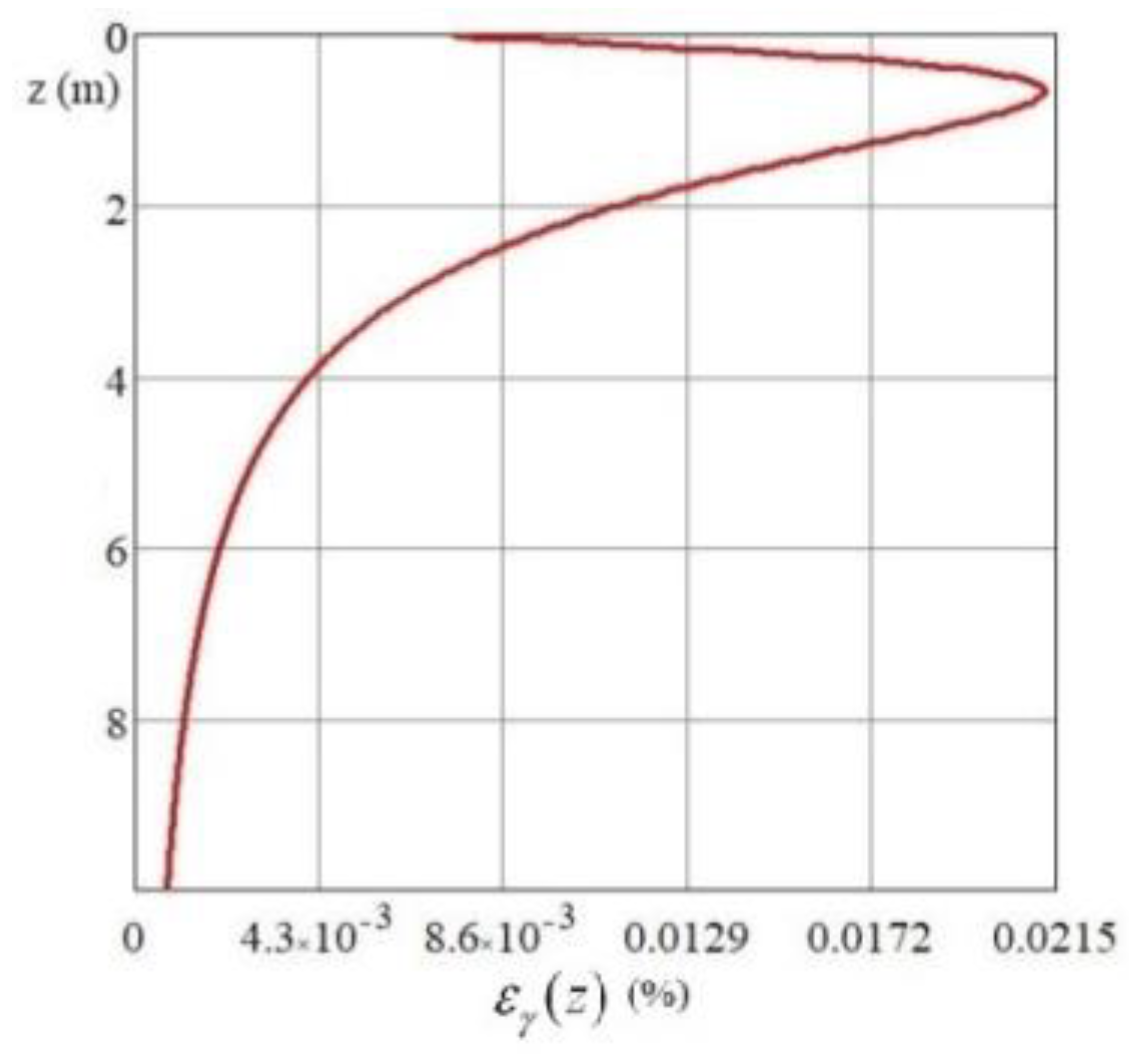

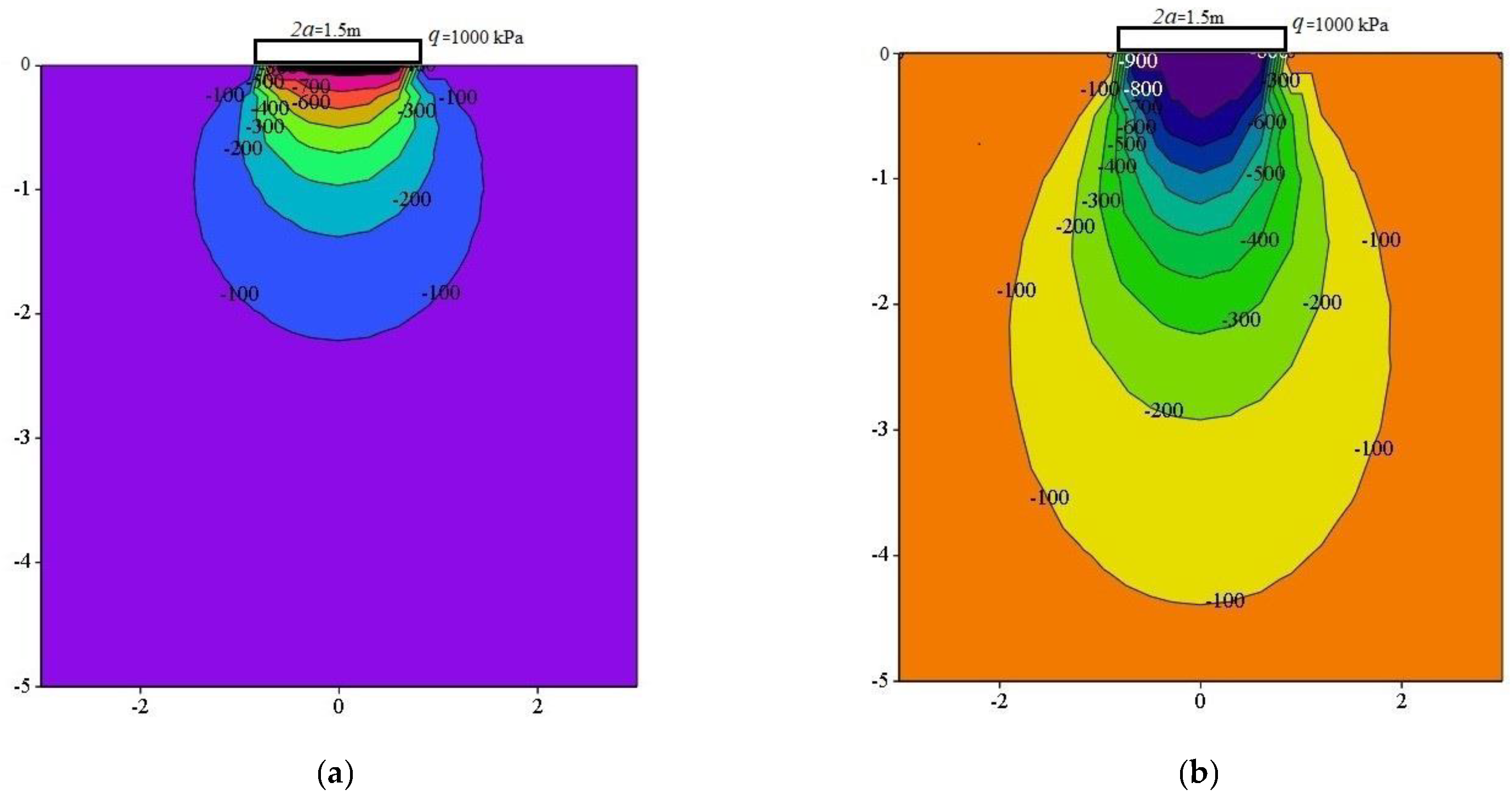
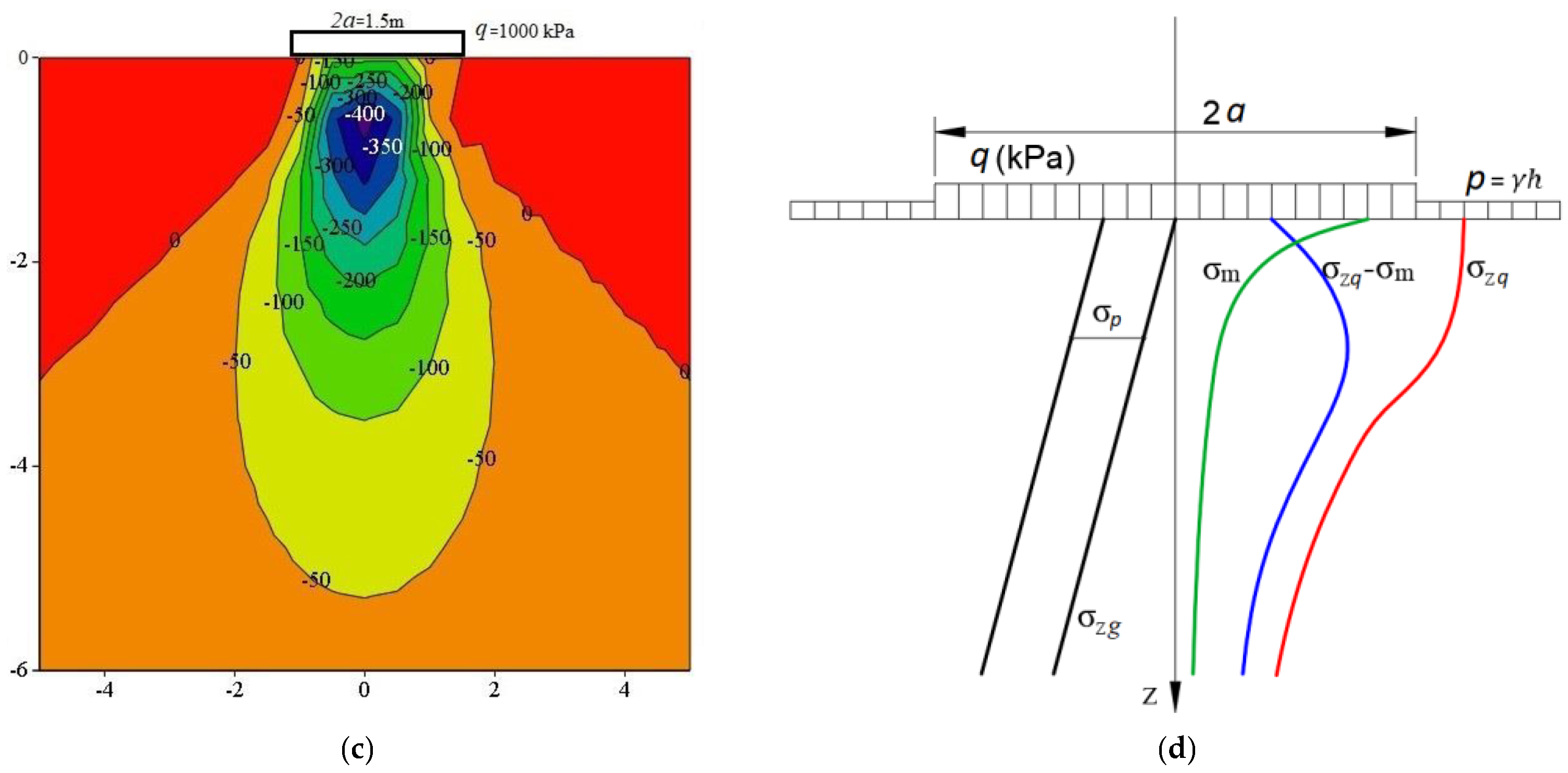




Publisher’s Note: MDPI stays neutral with regard to jurisdictional claims in published maps and institutional affiliations. |
© 2021 by the authors. Licensee MDPI, Basel, Switzerland. This article is an open access article distributed under the terms and conditions of the Creative Commons Attribution (CC BY) license (https://creativecommons.org/licenses/by/4.0/).
Share and Cite
Ter-Martirosyan, Z.G.; Ter-Martirosyan, A.Z.; Dam, H.H. Settlement and Bearing Capacity of Rectangular Footing in Reliance on the Pre-Overburden Pressure of Soil Foundation. Appl. Sci. 2021, 11, 12124. https://doi.org/10.3390/app112412124
Ter-Martirosyan ZG, Ter-Martirosyan AZ, Dam HH. Settlement and Bearing Capacity of Rectangular Footing in Reliance on the Pre-Overburden Pressure of Soil Foundation. Applied Sciences. 2021; 11(24):12124. https://doi.org/10.3390/app112412124
Chicago/Turabian StyleTer-Martirosyan, Zaven G., Armen Z. Ter-Martirosyan, and Huu H. Dam. 2021. "Settlement and Bearing Capacity of Rectangular Footing in Reliance on the Pre-Overburden Pressure of Soil Foundation" Applied Sciences 11, no. 24: 12124. https://doi.org/10.3390/app112412124
APA StyleTer-Martirosyan, Z. G., Ter-Martirosyan, A. Z., & Dam, H. H. (2021). Settlement and Bearing Capacity of Rectangular Footing in Reliance on the Pre-Overburden Pressure of Soil Foundation. Applied Sciences, 11(24), 12124. https://doi.org/10.3390/app112412124






